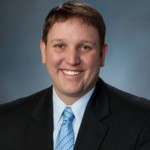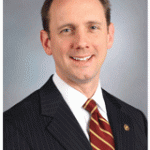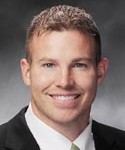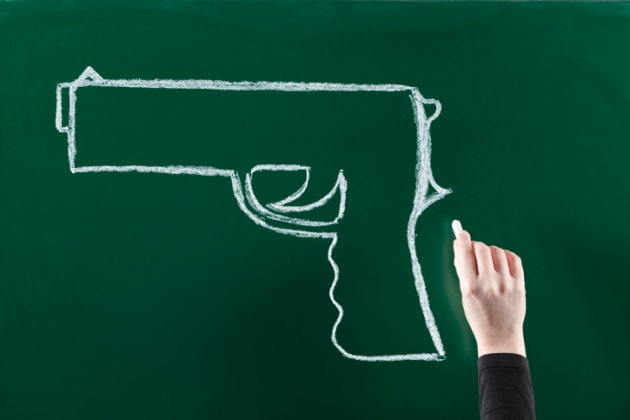JEFFERSON CITY, Mo. – The recent veto override of SB 656 has led to emotional responses on both sides of the aisle. Republicans are breathing a sigh of relief that they have passed a tool to help protect children in schools, yet Democrats are more concerned. Constituent concerns continue to be fueled by other publications, leading to Republican defensive posturing to get out the “truth” about the bill.

“The bill highlights the GOP’s hypocrisy,” Rep. Jeremy LaFaver (D-Kansas City) said. “They love big government when it means telling local governments what to do. This will backfire on them in November because moderate, suburban moms and dads know guns in kindergarten classrooms are a bad idea. The real question is how well will Democrats capitalize on their foolishness.”
Legislators’ phones, offices, and social media were flooded with constituents and groups voicing their opinion on the legislation before veto session, which was swiftly followed by several media outlets publishing comments and reaching out to concerned teachers and students. One candidate recently told The Missouri Times in an interview that a teacher in his district planned to stop teaching if the veto was overridden. The override has not halted these outcries.

“Bringing guns into our schools won’t make them safe – in fact, just the opposite,” Sen. Scott Sifton (D-St. Louis) said. “There are better ways to protect our children from armed intruders than introducing guns into the classroom.”
SB 656 allows school districts to designate teachers or administrators who volunteer as school protection officers to carry a firearm on school grounds, requiring anyone who volunteers, and is approved by the district, to undergo rigorous training to handle active shooter situations in their schools. The bill also modifies other provisions related to firearms, including lowering the age for a concealed carry endorsement to 19 from 21, prohibiting doctors from asking patients if they have firearm access, and barring housing authorities from restricting lessees from possessing a firearm.

“SB 656 actually strengthens accountability for guns in classrooms,” bill sponsor Sen. Will Kraus (R-Lee’s Summit) said. “Current law allows school districts to waive a ban on concealed carry in schools for individuals, and at least one district has done so. Now, any teacher designated a School Protection Officer (SPO) will need to undergo 112 hours of training, and twelve additional hours annually. Each school district will decide whether to use SPOs or not.”
Rep. Rick Brattin (R-Harrisonville) sponsored a similar House bill and was very outspoken in support of SPOs in the House during veto session.
“We tried to come up with something that would be a much better approach than somebody with a CCW permit,” Brattin said.
Social media outreach to legislators ranged wildly from cries of concern for children and support to full on opposition based on a misconception that the bill would require teachers to carry without training. Brattin clarified to The Missouri Times the classes that educators will need to go through in order to be an SPO are similar to the initial classes law enforcement undergo, a characterization Democrats say is both inaccurate and demeaning to police officers. The bill also permits school district to keep the identity of their SPO(s) a secret from local parents.

“I think it is great that other states are doing what is right, which is to protect kids, rather than doing what is politically correct,” Brattin said.
Missouri is the 10th state to enact a law related to arming teachers in the classroom. Recently, teachers with weapons in classrooms caused a stir when two teachers in separate states accidentally shot themselves on school grounds, causing non-life threatening injuries.
“When you are going through that level of training, you shouldn’t be shooting yourself in the foot. We can’t legislate ‘what if’s in every scenario, but I look at it as [these teachers] are receiving the same level of firearms training as a police officer. How many police officers do you hear of shooting themselves in the foot?” Brattin said.
“The first paragraph of the actual section pertaining to school protection officers shows the entire program is strictly voluntary and it must be adopted by the school district,” Brattin said. “Any teacher must volunteer. No one is forced to do anything. Even teachers that want to do this have to be approved and go before the school board and go through a public hearing and be voted upon before it even gets implemented. I hope that any school board that is looking into doing this will see that that teachers is fit for the duty and capable to handle a firearm,” Brattin said. “This isn’t Mrs. Smith – who is 60-years old with her CCW bringing her Dirty Harry 44 to school thinking she is going to protect kids.”
Brattin compared the program to the air marshal program that has been enacted federally since 9/11 to help put fliers at ease.
“This is about protecting our students. This is no different than the air marshals program. Every time you fly on an airplane, the likelihood of an armed air marshal who is trained in that kind of environment for any scenario is high. This is the exact same way we can protect our children. [The teachers] will be trained in the scenario that they could be in – put in an active shooter environment in a closed setting in order to learn how to protect the children. They will learn how to know what the right thing is to do. The training is there and we’ve got to do something to protect those kids,” Brattin said.
Rachael Herndon was the editor at The Missouri Times and also produced This Week in Missouri Politics, published Missouri Times Magazine, and co-hosted the #MoLeg podcast. She joined The Missouri Times in 2014, returning to political reporting after working as a campaign and legislative staffer.
Rachael studied at the University of Missouri – Columbia. She lives in Jefferson City with her husband, Brandon, and their two children.




